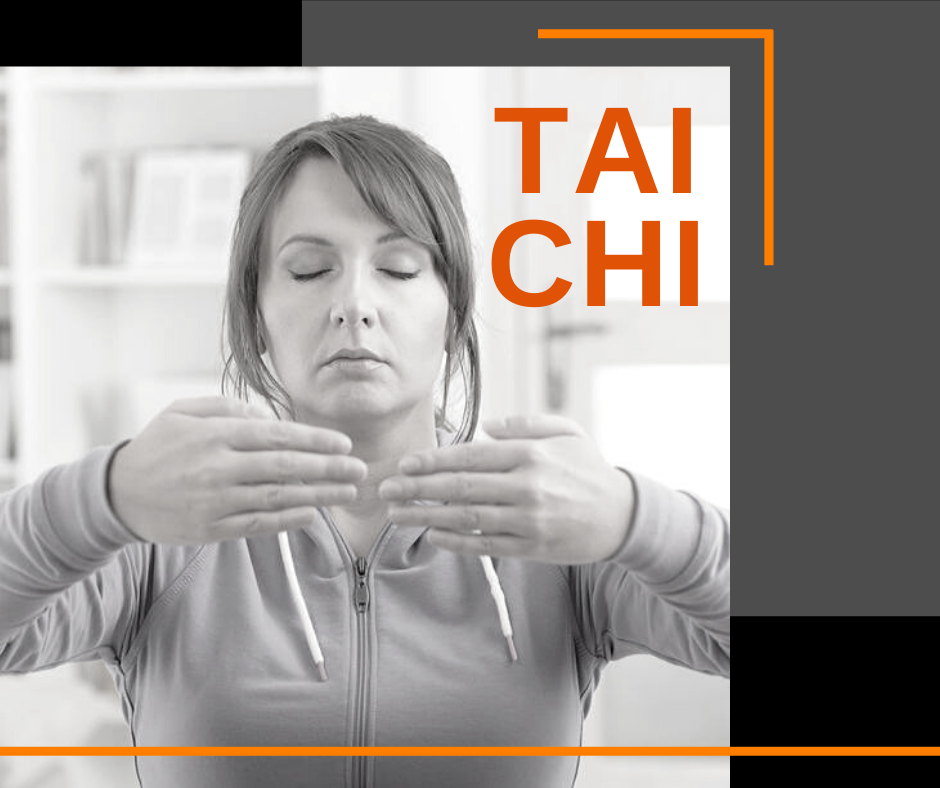With all that’s going on courtesy of the COVID-19 pandemic and measures like quarantine and fitness facility closures to ‘flatten the curve’ or slow its spread, have you considered at-home movement as a way to de-stress? One way to do this is T’ai Chi Chuan (pronounced “tie chee chuwan”). Sometimes this practice is referred to as, “mindful movement.”
Founded thousands of years ago, its roots trace back to China and is a very popular martial arts style. It is now used all over the country (and world) for multiple purposes. There are many styles, but all focus on enhancing the flow of qi (pronounced “chee”), a vital life energy that sustains and improves health. T’ai Chi can be performed alone by practicing basic movements or a series of movements strung together (called forms). It can also be done in groups, with people or with as little as one person (referred to as partner work).
Given the current situation with Coronavirus and with so many under stay at home orders, T’ai Chi is a wonderful movement practice to consider because of its versatility and universality.
(The video gives instruction for one basic breathing technique and one beginner-friendly movement. See the bottom of the blog for written instructions)
Benefits of T’ai Chi
Improved balance: While T’ai Chi is known to help those advanced in age improve their balance to prevent falls, it can benefit healthy individuals and athletes, too. The movements of T’ai Chi lend to neural recruitment that improves proprioception.
Increased flexibility: Many styles of T’ai Chi include deep stances in its forms. In order to learn and perform them properly, warm-up stretching exercises are done. Within a T’ai Chi form, there are usually multiple stances. The practitioner will use flexibility to adequately transition in and out of the stances.
Reduced stress: T’ai Chi is a powerful style of movement, yet it teaches synchronicity of breath and movement, capitalizing on the mind-body connection. While this has become very trendy and almost a buzz-word or concept in the last few years, it has been around for centuries. When the breath and movement connect in such a way that there’s harmony between the two, research shows that there is a reduction in the release of the stress hormone cortisol. While some levels of cortisol in the bloodstream are considered healthy, an excess can be detrimental.
Other benefits include:
Heightened awareness of posture through some of the static techniques taught in T’ai Chi systems, better sleep quality, and an overall enhanced quality of life. For those advanced in age, research shows that this movement art form has a positive impact on cardiovascular fitness and blood pressure and is an effective system for fall prevention.
T’ai Chi Exercises to Try
Basic T’ai Chi breathing pattern (as demonstrated in the video):
Sit or stand in a comfortable position, with your back straight and weight equally distributed onto both feet. Place one hand on your tummy and one hand on your chest. Feel which is rising more. If it’s your chest, focus the breath to your belly until the belly rises more. Do this for several breaths until the belly rises more.
Here’s a basic movement for your hands and wrists (they may be tired or overworked as a result of working from home, typing away on your various electronic devices, I’m right there with ya!!).
Revolving Hands (demonstrated in the video):
Sit or stand in a comfortable position, with your back straight and weight equally distributed onto both feet. Extend arms out (away from your body, directly in front of your chest). Make sure shoulders are parallel to the floor and not strained. Place a slight bend in elbows and let the wrists hang loosely. Rotate palms in a circular motion clockwise ten times and counterclockwise ten times.
These are just beginning movements that can springboard into a more regular and complete practice of a centering practice for both body and mind.
References:
Kuramoto, A.M. (2006). Therapuetic benefits of Tai Chi Exercise: Research Review Wisconsin Medical Journal (105) 7, 42-45.
Pop, T., & Wlodyka, R. (2012). Influence of Tai Chi exercises on relaxation of healthy individuals. Journal of Combat Sports and Martial Arts, 1(2),35-41.



